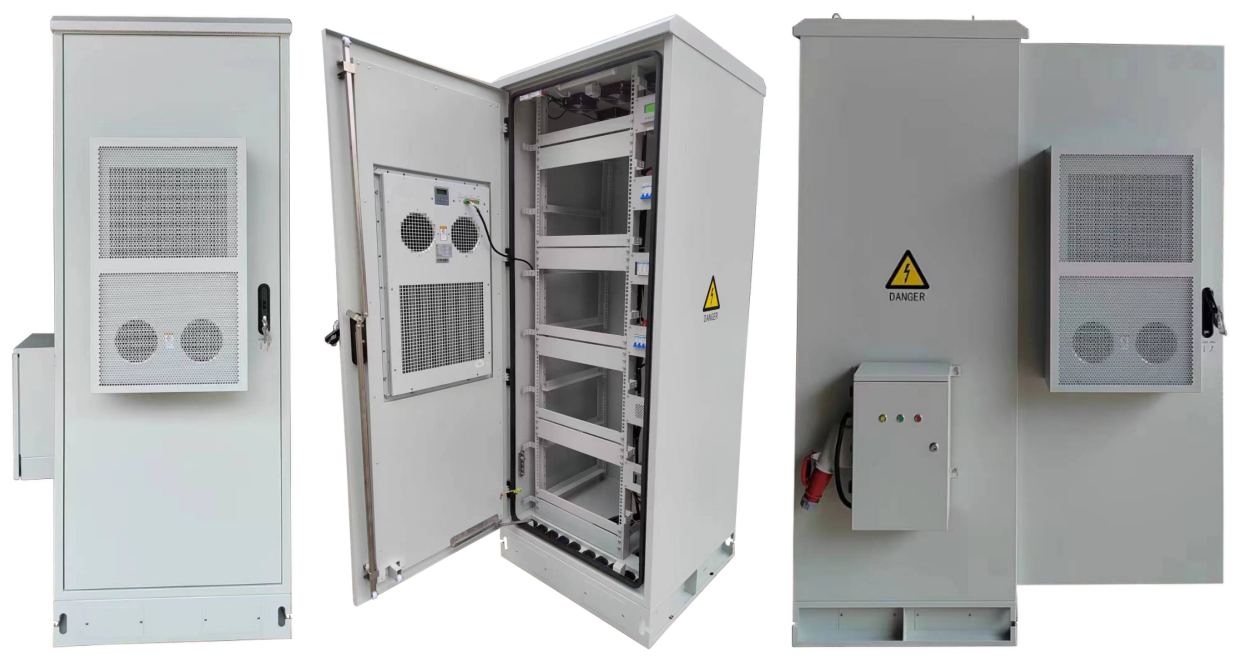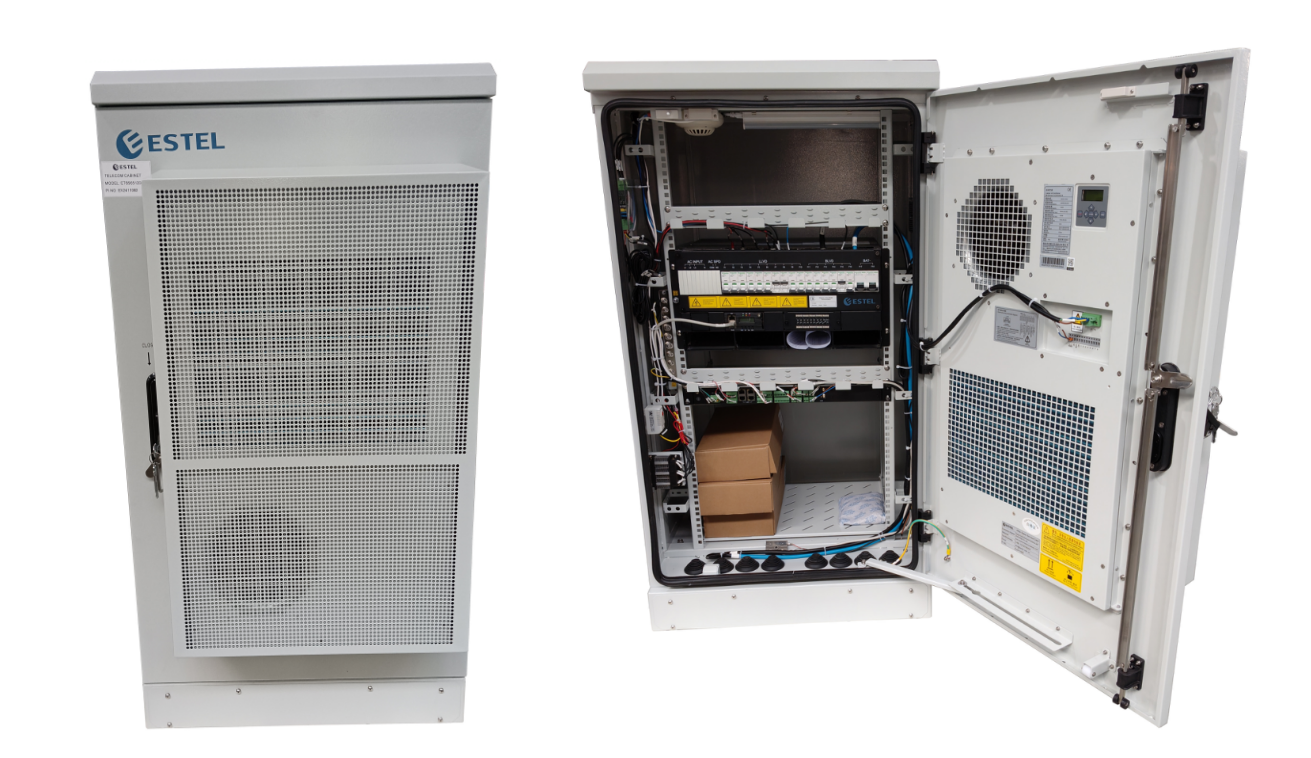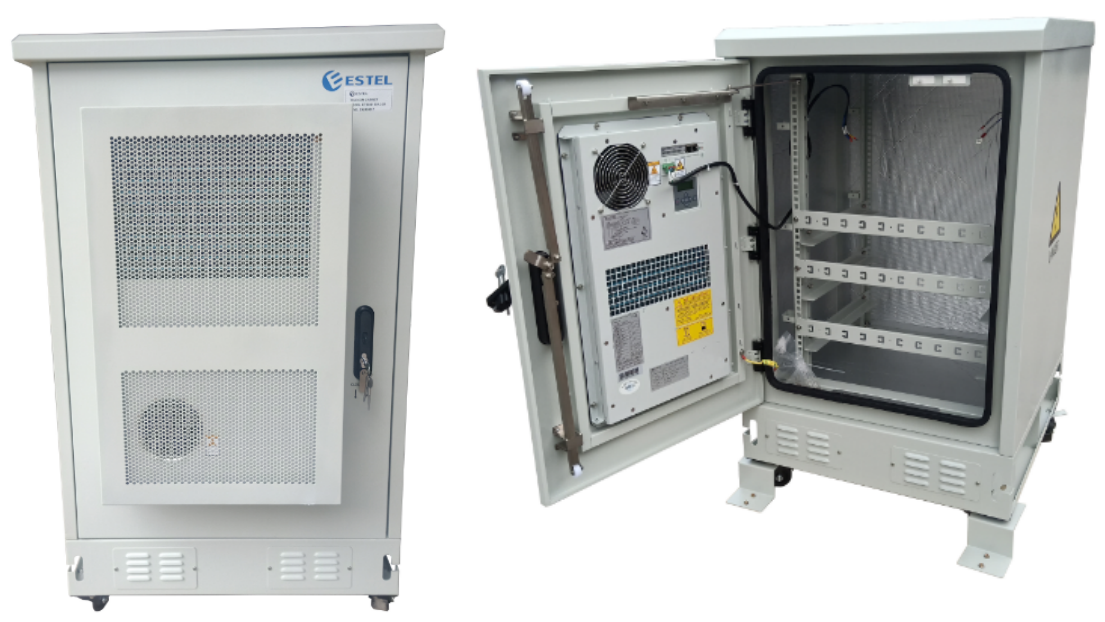Organizing Cables in Data Center Cabinets Made Simple

Efficient datacentercabinetcablemanagement plays a critical role in ensuring your data center operates at peak performance. Properly organized cables improve airflow, which reduces hotspots and enhances cooling efficiency. This not only protects your equipment but also lowers energy costs. Disorganized cables, on the other hand, can lead to downtime, as tangled wires complicate troubleshooting and delay repairs. By streamlining cable layouts, you simplify maintenance tasks and minimize risks like tripping hazards or electrical accidents. Additionally, a well-planned cabling system supports scalability, allowing you to adapt to future needs without disrupting operations.
Organized cables don’t just look neat—they create a safer, more efficient, and future-ready environment for your data center.
Key Takeaways
Neat cables help air move better, stop overheating, and cool faster. This saves energy and cuts costs.
Leave room in racks for more cables later. Use flexible tools like patch panels for easy upgrades.
Use colored cables to make finding them easier. This speeds up fixing problems and reduces delays.
Write down cable paths and connections often. This helps with repairs and keeps things running smoothly.
Use tools like trays and organizers to stop tangles. This keeps cables tidy and looks professional.
Planning and Preparation for Effective Data Center Cable Management
Assessing Data Center Cabling Needs
Measuring cable distances and mapping paths.
Before you begin organizing cables, you need to measure cable distances accurately and map out their paths. This step ensures that cables are cut to the correct length, reducing slack and clutter. Use tools like CAD software to create precise diagrams of your cabling layout. These diagrams help you visualize cable pathways and identify potential problem areas. Additionally, maintaining a cable management database or using documentation software can simplify the process of tracking cable paths. Regular audits and updates to these records ensure your cabling infrastructure remains accurate and up-to-date.
Identifying high-density areas for better airflow.
High-density areas in your data center require special attention. Overcrowded cables can block airflow, leading to overheating and reduced equipment performance. To address this, identify zones where cables are densely packed and implement solutions like cable trays or vertical cable managers. These tools help organize cables while maintaining proper airflow. Placing high-density components, such as servers, at the bottom of racks can also improve cooling efficiency. A well-planned cabling layout not only enhances airflow but also simplifies maintenance and reduces downtime.
Planning for Scalability
Allocating space for future cable additions.
Effective data center cable management requires planning for future growth. Allocate extra space in your racks and cabinets to accommodate additional cables and equipment. Forecasting future needs, such as new technologies or increased data traffic, helps you design a cabling layout that supports expansion. Flexible cable management solutions, like patch panels and modular racks, make it easier to add or reconfigure cables without disrupting operations. By planning ahead, you ensure your data center remains adaptable to changing demands.
Choosing scalable cable management solutions.
Scalability is key to a long-lasting cable management strategy. Invest in solutions that grow with your data center. Options like cable trays, runways, and high-density cable solutions provide the flexibility needed for future upgrades. Patch panels streamline connections, while cable managers and raceways keep cables organized and accessible. Cable management software can also play a vital role by documenting and tracking your cabling infrastructure. These solutions not only support scalability but also enhance the overall efficiency of your data center.
Planning ahead saves time, reduces costs, and ensures your data center remains efficient and future-ready.
Best Practices for Data Center Cabling
Cutting and Organizing Cables
Cutting cables to the right length to avoid slack.
Cutting cables to the correct length is one of the most important cable management tips. Longer cables can cause several issues:
They weaken signals, leading to potential data integrity problems.
They are more prone to electromagnetic interference, which can result in data errors.
They complicate maintenance and troubleshooting, increasing downtime and costs.
By cutting cables to the appropriate length, you not only improve efficiency but also reduce clutter in your data center. This simple step ensures effective cable management and enhances overall performance.
Using cable combs to align and separate cables.
Cable combs are essential tools for cable organization. They keep cables neatly aligned and securely in place, reducing clutter and improving airflow. This organization minimizes the risk of accidental disconnections and cable damage. Additionally, cable combs enhance the aesthetic appeal of your setup and make maintenance tasks, such as tracing cables, much easier. By using cable combs, you can organize for ease of use and ensure your data center operates efficiently.
Implementing Color-Coded Systems
Assigning colors for different cable types.
A color-coded system simplifies cable management by making it easy to identify cable purposes. For example:
Blue cables can be used for data.
Yellow cables can be assigned to voice.
Black cables can be reserved for CCTV.
This system streamlines installation and troubleshooting, reducing downtime and improving safety. It also enhances the aesthetics of your setup, especially in visible areas.
Simplifying troubleshooting with visual cues.
Color-coded cables provide clear visual cues that make troubleshooting faster and more efficient. For instance, you can quickly identify network issues by following the color-coded paths. This approach reduces the time spent on problem resolution and ensures optimal performance. A well-implemented color-coded system also supports scalability, allowing you to integrate new devices seamlessly.
Labeling Cables for Efficiency
Using durable labels for long-term use.
To maintain effective cable management, label your cables with durable materials that can withstand wear and tear. Regular maintenance ensures labels remain intact and legible. Proper documentation of cable paths and connections further enhances efficiency, making it easier to locate and manage cables over time.
Standardizing label placement for consistency.
Standardized label placement is crucial for efficient cable management. Consistent labeling reduces downtime by simplifying troubleshooting and improving efficiency. When you label your cables in a uniform manner, you make it easier to identify and trace them during maintenance or upgrades. This practice ensures your data center remains organized and future-ready.
Tip: Combine color-coding with proper labeling to create a robust cable management system that is both efficient and scalable.
Tools and Accessories for Data Center Cable Management

Horizontal and Vertical Cable Managers
Benefits of using cable managers for organization.
Horizontal and vertical cable managers are essential for maintaining a clean and organized data center. They prevent cables from tangling, which reduces downtime and enhances reliability. These tools also enable fast wire access, making maintenance tasks quicker and more efficient. By mitigating electromagnetic interference between power and data cables, cable managers improve overall system performance. Their user-friendly design ensures that you can manage cables effectively while maintaining a professional appearance.
Selecting the right size and type for your setup.
Choosing the right cable manager depends on your specific needs. Horizontal cable managers are ideal for organizing cables within a single rack, while vertical managers handle cables running between racks. Use the table below to understand key features of these tools:
Feature | Description |
|---|---|
Sturdy Construction | Made from powder-coated aluminum for durability and lightweight design. |
Troughs, Spools, and Trays | Equipped with components to ensure proper cable organization and prevent tangling. |
Single-Sided or Double-Sided | Options available based on specific requirements for flexibility. |
Color Choices | Available in silver or black to match existing infrastructure. |
Door Versatility | Doors can be opened from either side or removed for easy access. |
User-Friendly Functionality | Enhances reliability and reduces downtime in network management. |
Cable Ties and Velcro Straps
Differences between reusable and single-use ties.
Cable ties are indispensable for securing cables. Reusable ties feature a release mechanism, making them ideal for temporary setups or frequent adjustments. Single-use ties, with their non-reversible locking design, are better suited for permanent installations. The table below highlights their differences:
Feature | Reusable Zip Ties | Single-Use Zip Ties |
|---|---|---|
Design | Release mechanism | Non-reversible locking |
Durability | Long lifespan | One-time use |
Cost | Higher upfront cost | Lower upfront cost |
Applications | Temporary and adjustable | Permanent installations |
Eco-Friendliness | Sustainable option | Generates waste |
Best practices for securing cables without damage.
Follow these steps to secure cables effectively:
Use ties suitable for the size and weight of your cables.
Avoid over-tightening to prevent damage.
Space ties evenly to distribute pressure.
Inspect cables regularly for wear or signal loss.
Use reusable ties for flexibility.
Avoid excessive bending to maintain cable integrity.
Velcro straps are a great alternative. They minimize the risk of damage and are reusable, making them ideal for setups requiring frequent modifications.
Cable Trays and Patch Panels
Organizing cables with trays and ladders.
Cable trays and ladders simplify cable organization by bundling cables systematically. This prevents tangling and improves airflow, reducing the risk of overheating. These tools also reduce electromagnetic interference, enhancing the reliability of your structured cabling systems. By using trays, you create an optimal layout that supports effective cabling management.
Enhancing flexibility with patch panels.
Patch panels provide a centralized point for connecting cables, making it easier to expand or modify your network. They support various cable types and sizes, ensuring compatibility with emerging cabling technologies. Patch panels also simplify complex cabling, improving the appearance of your setup and enhancing cable management efficiency.
Tip: Combine cable trays and patch panels to create a scalable and efficient cabling system.
Maintaining Airflow and Scalability in Data Center Cabinets

Managing Cable Density
Avoiding overcrowding to ensure proper airflow.
Overcrowding cables in a server rack can lead to significant issues. When unused cables pile up, they overload racks and disrupt airflow. This disruption hinders cooling efficiency and increases energy consumption. To avoid these problems, you should focus on reducing cable congestion. Use tools like cable trays, racks, and ties to bundle cables systematically. This approach clears airflow pathways, improving air movement and minimizing heating.
Poor cable management can also cause air damming, where airflow gets blocked, preventing hot air from escaping. This blockage raises temperatures in the data center, increasing the risk of equipment failure and downtime. Organizing cables with a proper cabling layout ensures proper airflow and keeps your equipment running efficiently.
Placing high-density components at the bottom of racks.
Positioning high-density components, such as servers, at the bottom of a server rack enhances cooling efficiency. Heat naturally rises, so placing these components lower reduces the strain on cooling systems. This arrangement also prevents cables from obstructing airflow at higher levels. By managing cable density effectively, you create a more reliable and energy-efficient cabling infrastructure.
Ensuring Scalability
Leaving room for future cable additions.
Planning for future growth is essential in data center cabling. Always leave space in your server racks for additional cables and equipment. Consider moves, adds, and changes (MACs) during the planning phase to accommodate future expansions. Select cabling that can handle repeated connections without damage. This ensures your cabling infrastructure remains adaptable to new technologies and increased demands.
Design cable pathways with potential upgrades in mind. Regularly assess existing cables to confirm they meet current requirements. By planning ahead, you simplify future installations and avoid unnecessary disruptions.
Regularly reviewing and updating cable layouts.
Maintaining scalability requires consistent reviews of your cabling system. Regularly update cable layouts to reflect changes in your data center. This practice helps in reducing cable congestion and ensures your setup remains efficient. Smart cable management strategies, such as organizing cables for efficient cooling, keep your system ready for future growth. By staying proactive, you ensure your data center remains scalable and prepared for evolving needs.
Tip: Combine proper cabling layout with regular maintenance to achieve long-term efficiency and scalability.
Documentation and Testing for Effective Data Center Cable Management
Keeping Accurate Records
Documenting cable types, paths, and connections
Accurate documentation is essential for maintaining an organized and efficient data center. By creating a detailed map of your cable layout, you can track pathways and connections with ease. Label each cable clearly, specifying its type and function. Use both physical labels and digital records to ensure long-term accessibility. This practice simplifies troubleshooting connectivity problems and reduces downtime during maintenance. It also helps you identify and resolve issues quickly, improving overall efficiency.
Detailed documentation of the installation process is equally important. Record the placement of cables, their lengths, and their connections. This information becomes invaluable when upgrading or expanding your infrastructure. With proper records, you can avoid unnecessary disruptions and maintain a streamlined cable management system.
Using software tools for cable management documentation
Modern software tools make cable management documentation more efficient. Data Center Infrastructure Management (DCIM) software provides a comprehensive solution for visualizing and tracking your cabling infrastructure. These tools allow you to:
Design your cabling layout.
Document installation processes.
Measure cable lengths before installation.
Validate connections and track capacity.
Plan for future expansions.
Traditional tools like Excel and Visio can also be used, but they lack the advanced features of DCIM software. By leveraging these tools, you can maintain accurate records and ensure your data center remains scalable and efficient.
Testing Cables Regularly
Verifying connectivity after installation
Testing cables after installation ensures your connections are reliable and compatible. Use tools like network testers to check parameters such as optical transmission power and bit-error rates. These tests help identify potential issues before they impact performance. Fiber inspection scopes are also essential for examining optical connectors. Dirt or debris on connectors can obstruct light transmission, leading to connectivity problems. Regular testing ensures your cables perform optimally and reduces the risk of downtime.
Troubleshooting issues with proper testing tools
When troubleshooting connectivity problems, the right tools make all the difference. Fiber inspection scopes allow you to detect and clean contaminants on optical connectors. Network testers help diagnose issues by measuring critical parameters. These tools ensure you can pinpoint problems quickly and accurately. By incorporating regular testing into your maintenance routine, you can keep your data center running smoothly and prevent minor issues from escalating into major disruptions.
Tip: Combine thorough documentation with regular testing to create a robust cable management strategy that minimizes downtime and maximizes efficiency.
Proper planning, organization, and maintenance are the cornerstones of effective data center cable management. A well-organized cabling system ensures efficient operations, reduces downtime, and supports scalability. Regular maintenance, such as removing unused cables, prevents unnecessary costs and improves airflow. Employing strategies like labeling, color-coding, and using scalable solutions simplifies troubleshooting and future expansions.
A reliable cable management system minimizes risks, enhances performance, and prepares your data center for evolving demands. Start implementing these practices today to create a safer, more efficient, and future-ready infrastructure.
FAQ
What is the best way to label cables in a data center?
Use durable labels that can withstand wear and tear. Place them consistently on each cable for easy identification. Combine labels with a color-coded system to simplify troubleshooting and maintenance. This approach ensures your cables remain organized and accessible.
How often should you test cables in a data center?
Test cables regularly, especially after installation or upgrades. Use tools like network testers to verify connectivity and performance. Routine testing helps you identify potential issues early, reducing downtime and ensuring optimal system reliability.
Why is airflow important in cable management?
Proper airflow prevents overheating and ensures equipment operates efficiently. Overcrowded cables block airflow, increasing energy consumption and the risk of equipment failure. Organizing cables systematically improves cooling and extends the lifespan of your hardware.
What tools are essential for cable management?
Key tools include cable ties, Velcro straps, cable trays, and patch panels. Cable combs help align and separate cables neatly. Horizontal and vertical cable managers keep cables organized and accessible. These tools enhance efficiency and simplify maintenance.
How can you plan for future scalability in cable management?
Leave extra space in racks for additional cables and equipment. Use modular solutions like patch panels and cable trays. Regularly review and update your cable layout to accommodate new technologies and increased demands. Planning ahead ensures your system remains adaptable.
Tip: Combine proper planning with scalable tools to future-proof your data center.
See Also
Expert Advice on Organizing Cables in Server Racks
Understanding ESTEL PDUs and Their Importance in Cabinets
Enhancing Outdoor Cabinets Through Power, Cooling, and Monitoring
CALL US DIRECTLY
86-13752765943
3A-8, SHUIWAN 1979 SQUARE (PHASE II), NO.111, TAIZI ROAD,SHUIWAN COMMUNITY, ZHAOSHANG STREET, NANSHAN DISTRICT, SHENZHEN, GUANGDONG, CHINA

